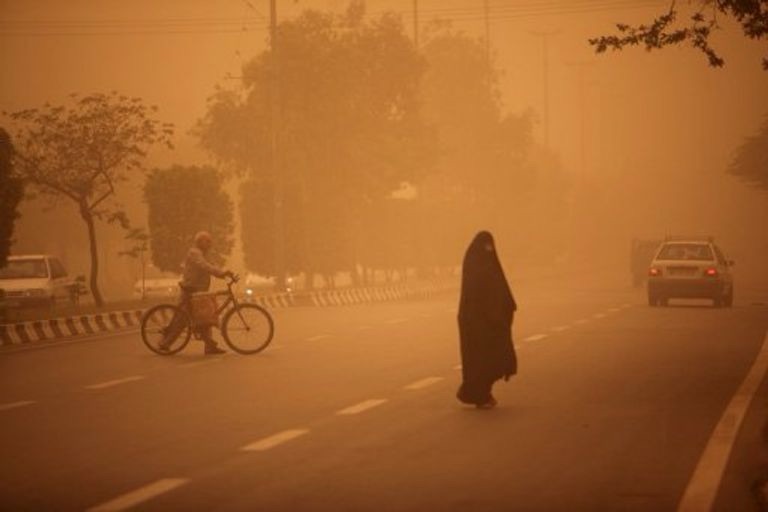Introduction
Ahwaz, the Arab region rich in natural resources located in southwestern Iran, is one of the areas most affected by the reckless environmental policies imposed by the Iranian government. Ahwaz faces serious environmental issues, including pollution, drought, and changes in river flow, which have negatively impacted the local population, natural environment, and wildlife. These crises stem from several factors, including dam construction and unsustainable river diversion.
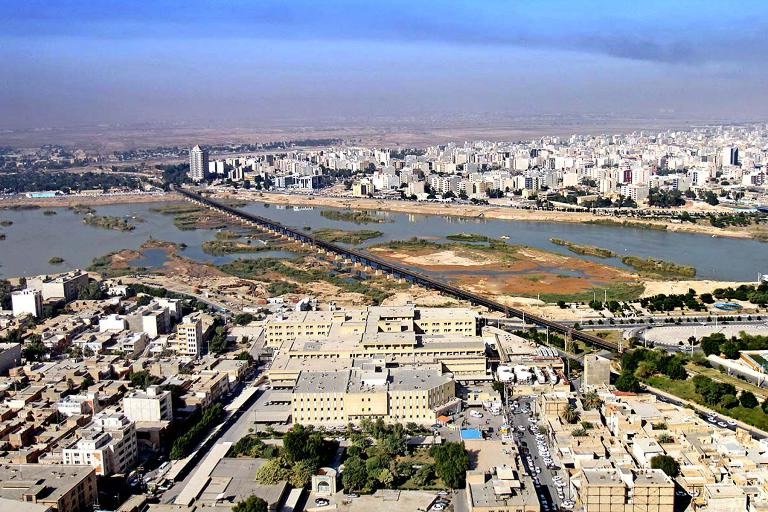
Iranian Policies and Their Impact on the Environment
Iranian policies have exacerbated environmental crises in Ahwaz, where the government heavily relied on building massive dams and diverting rivers, such as the Karun River, one of the main rivers in Ahwaz, to direct water to other areas within Iran like Isfahan and Yazd. This has resulted in the drying up of vital rivers and water bodies.
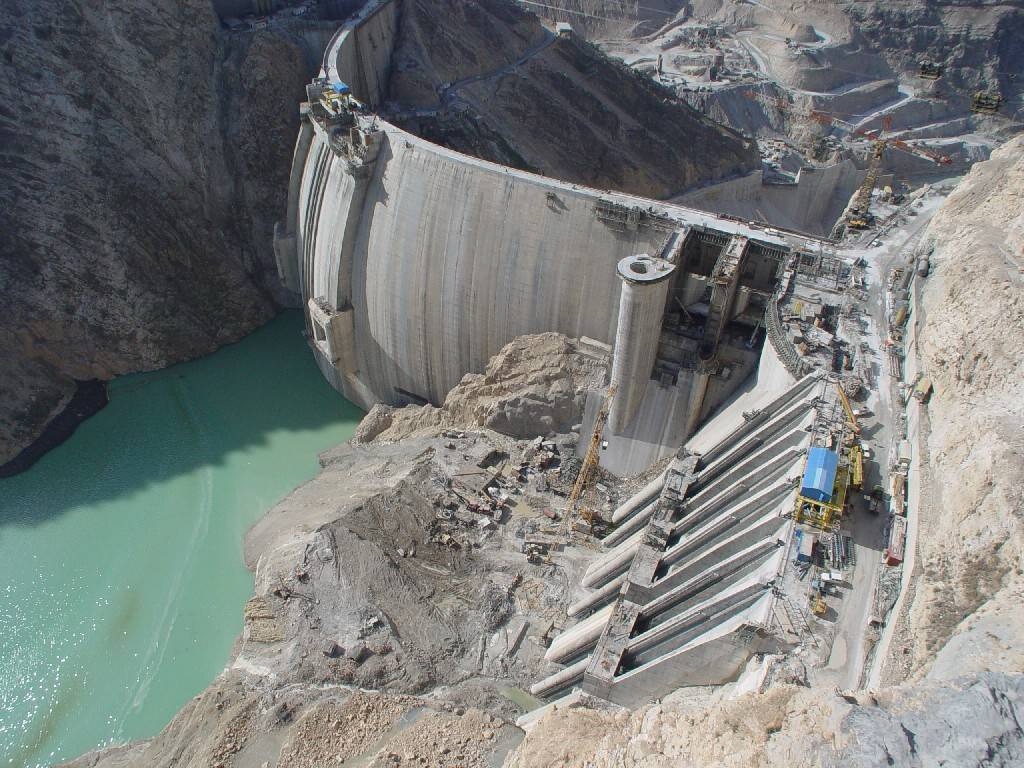
According to a report by IRNA (Iranian News Agency), the authorities admitted to building several dams on the Karun and Karkheh rivers, which reduced the water flow towards Ahwaz. This irresponsible diversion of water has caused the drying up of agricultural lands and a sharp deterioration of the ecosystem, angering the local population as their livelihoods, dependent on agriculture and fishing, were destroyed.
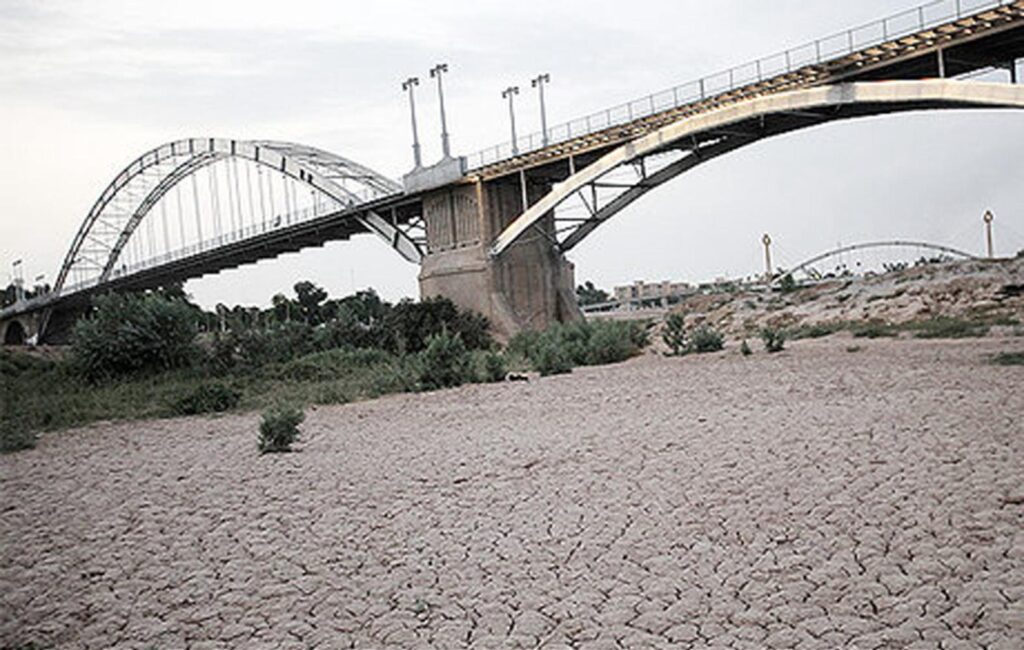
Impact of Environmental Pollution on Humans
The people of Ahwaz are directly suffering from environmental pollution caused by intensive industrial activities in the region, especially in the oil and gas sectors. Reports from the Iranian Atomic Energy Organization indicate that Ahwaz is one of the most polluted regions in Iran due to emissions from factories and oil projects. Polluted air has become a major cause of increased respiratory illnesses like asthma and bronchitis, particularly among children and the elderly.
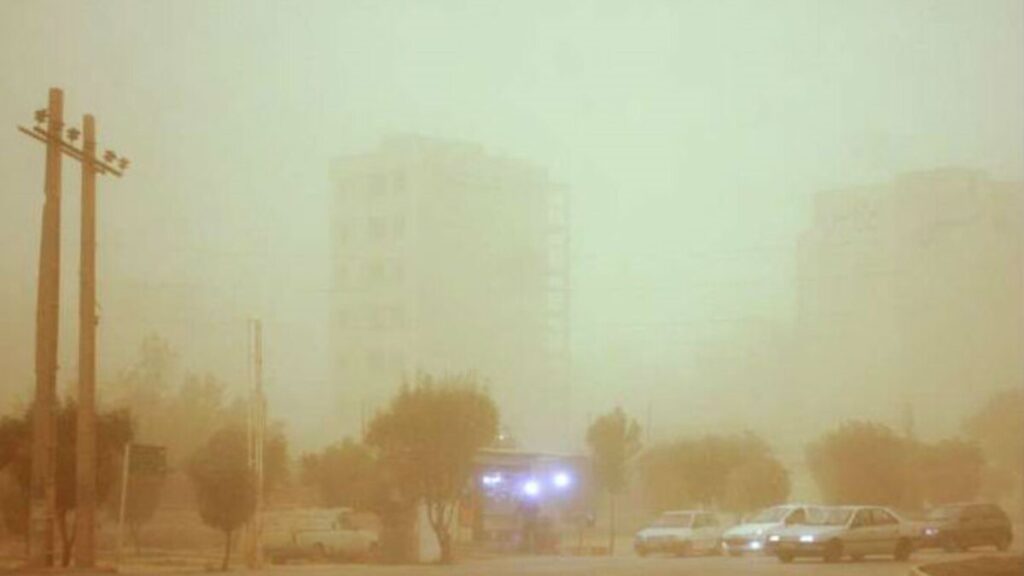
Moreover, pollution from oil activities has contaminated both water and soil, making drinking water unsafe in many areas, according to reports from the World Health Organization (WHO). The deterioration in water quality has led to the spread of gastrointestinal and skin diseases among the local population.
Impact of Environmental Pollution on Animals and Plants
• Animals: Iranian policies, including dam construction and river diversion, have destroyed the natural habitats of wildlife, causing a decline in animal populations due to the lack of water and food. The number of migratory birds, which relied on Ahwaz’s wetlands and marshes for nesting and rest, has significantly declined. According to reports from the World Wildlife Fund (WWF), the drying up of the wetlands has led to the extinction or endangerment of many species in the region.
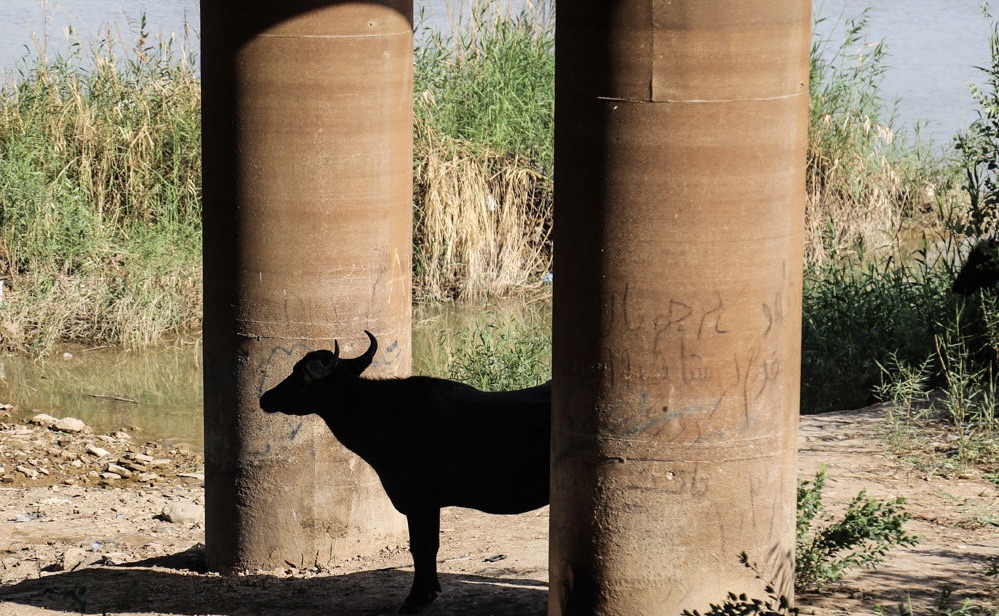
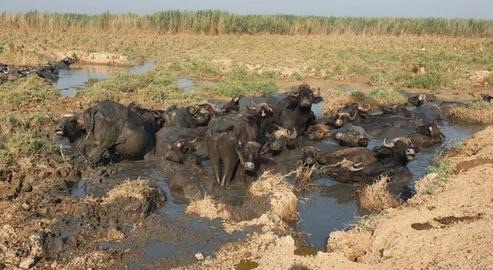
• Plants: Iranian policies have caused the drying of agricultural lands in Ahwaz, resulting in a significant decline in vegetation cover. Palm crops, once a symbol of the region, have suffered greatly, with date production decreasing due to water shortages. According to reports from the Iranian Ministry of Agriculture, thousands of hectares of farmland in Ahwaz have been destroyed due to poor water management policies, negatively impacting the local agricultural economy.
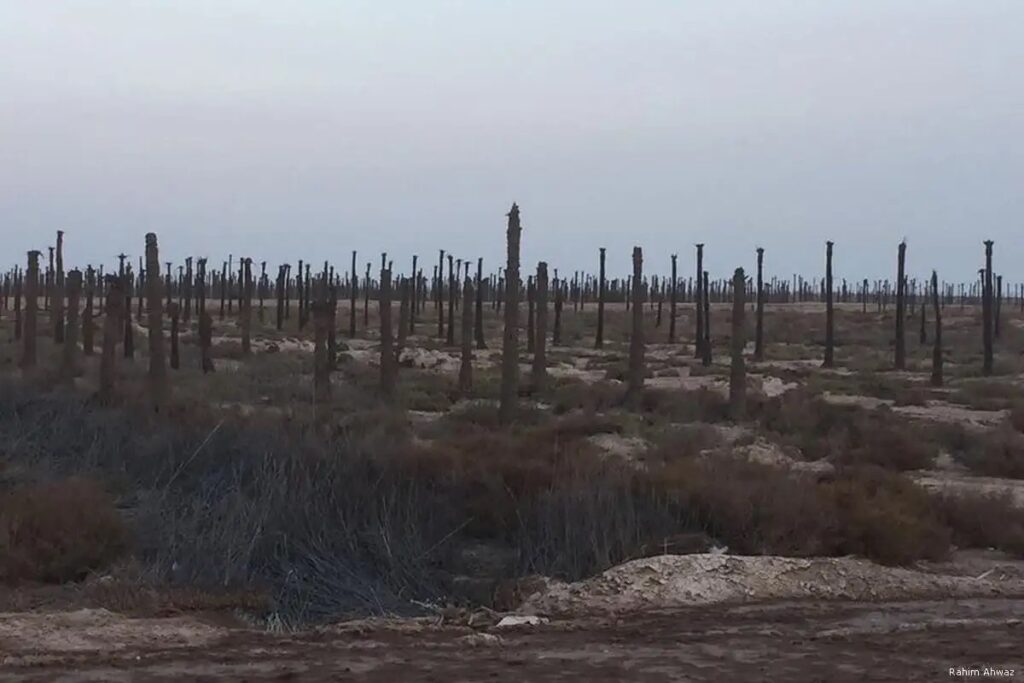
Impact of Environmental Pollution on Fish
Rivers and wetlands in Ahwaz were once major sources of fish, but river diversion and the drying up of wetlands have led to a sharp decline in fish populations. River pollution caused by industrial activities, especially in the oil and agricultural sectors, has resulted in mass fish deaths. According to reports from the Iranian Environmental Protection Agency, the Karun River suffers from high levels of pollution due to industrial waste, leading to a significant decline in fish stocks.
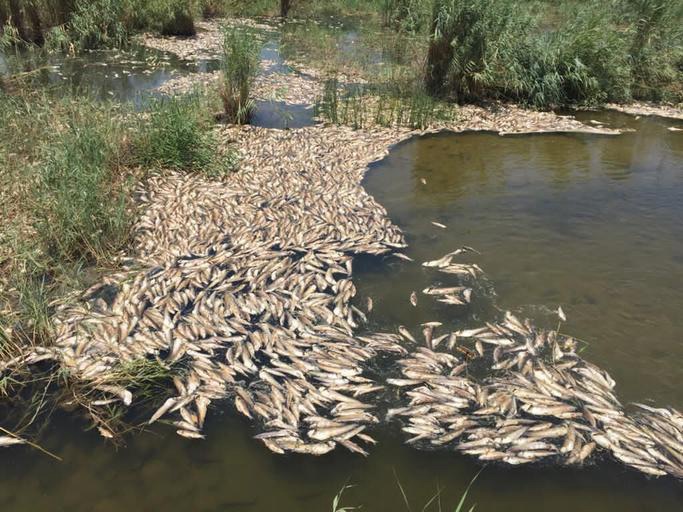
Dam Construction and Wetland Drying
One of the primary causes of the environmental crisis in Ahwaz is the construction of dams on major rivers such as Karun and Karkheh. These dams, designed to divert water to other parts of Iran, have caused the drying of wetlands, which once formed a rich ecosystem and were a crucial water source for agriculture and wildlife.

Reports from the Food and Agriculture Organization of the United Nations (FAO) indicate that wetlands in Ahwaz have drastically shrunk, leading to the disappearance of many plant and animal species that depended on these areas.
Local Protests and Demands
Ahwaz has witnessed numerous protests by local residents demanding that water be returned to the rivers and wetlands threatened by drought. They have also expressed their dissatisfaction with the Iranian government’s policies, which are contributing to environmental destruction, increasing unemployment, and deepening poverty. However, no serious action has been taken to address these policies.
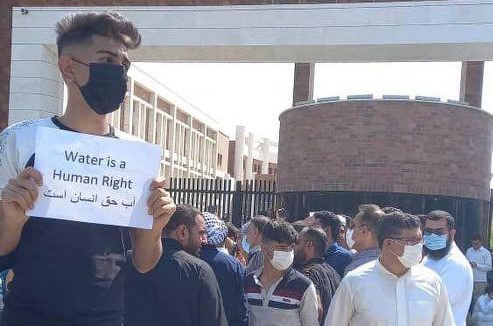
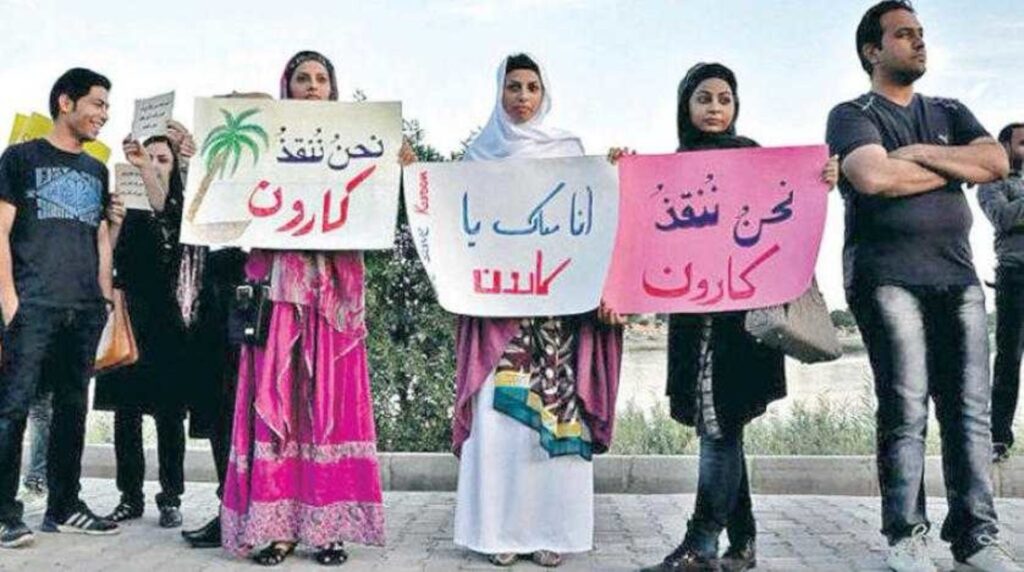
Conclusion
Ahwaz faces a severe environmental crisis caused by the Iranian government’s policies, including dam construction and river diversion, as well as heavy industrial pollution. This crisis has had devastating effects on humans, animals, plants, and fish, leading to the degradation of the entire ecosystem. International and local environmental organizations are calling on the Iranian government to take immediate action to protect this vital region and restore its environmental health.
Sources
• IRNA (Iranian News Agency).
• Iranian Atomic Energy Organization.
• World Wildlife Fund (WWF).
• Food and Agriculture Organization of the United Nations (FAO).
• Iranian Environmental Protection Agency.
• World Health Organization (WHO).




